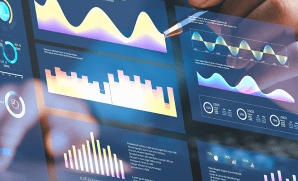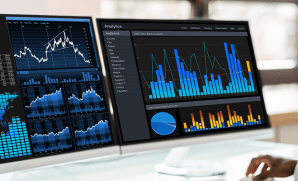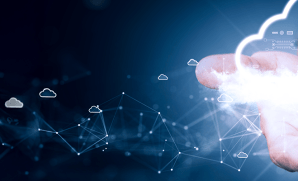Often demand planners cannot look beyond the top N high ASP / high Volume SKUs. Thus, the demand planning cycles remain confined to the upcoming quarter. Machine Learning (ML) offers accurate forecasts at scale and across the entire forecast horizon. However, it cannot handle non-linear and turbulent situations. It leads to an ML adoption conundrum concerning autonomous forecasting!
Hybrid approaches blend human and machine intelligence. They produce better outcomes than fully human or fully machine-automated processes. The best part is the SKUs/Quarters, where the machine drives the forecast fully autonomously and gets dynamically dialed up / down directly to machine performance in delivering robust demand signals. It helps minimize risk while allowing humans to remain in control.
This blog talks about a hybrid modeling approach in SAP Integrated Business Planning IBP solution to enable this best-of-breed autonomous forecasting capability for a company. It shows how to generate a composite forecast across the best ML signals and human judgment-based forecasts from account teams/demand planners.
Benefits of ML for Demand Planning and Forecasting
At the outset, let’s see how ML can benefit a company in various ways regarding demand planning and forecasting. Some of the benefits include the following.
- ML enables comprehensive, accurate, and transparent analytical options and results.
- It helps ingest and leverage a broad range of data.
- Companies can leverage easy-to-configure, powerful algorithms that produce robust results when implemented in an organized SQL / R environment.
- The technology helps increase processing speed, intuitive speed or accuracy trade-offs, and workflows that produce data science insights that tell what to curate.
- Additionally, it can constantly update the most recent data and models that adapt to changes and updates in a particular regime.
How can YASH help?
YASH typically conducts a full-scope ML pilot for clients. This would include both (as per client need) Demand Forecasting and Demand Sensing within SAP IBP and custom ML models outside SAP IBP for all the products for businesses. Here’s an example of Planning Processes in a hi-tech environment powered by ML capabilities.
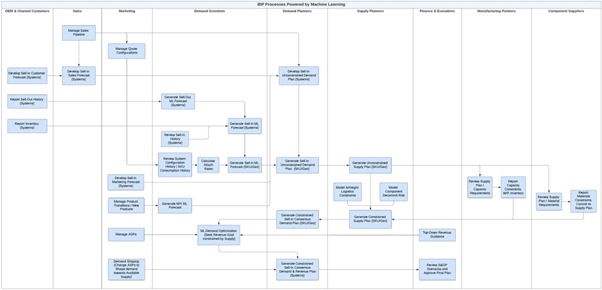
Steps to follow for demand forecasting:
- Extract lag snapshots and other relevant data sets from your systems into flat files. This will help ensure that the data used for forecasting is complete and accurate.
- Set up a combination of forecasting models, such as Gradient Boosting for Decision Trees (GBDT) Model in IBP Demand Forecasting, along with ARIMA, Auto Exponential Smoothing, and Croston TSB. Use a MAPE-based pick-best model selection approach to choose the best models for your forecasting needs.
- Consider using custom machine learning models in Python outside of IBP and then load them into IBP for composite forecast generation.
- Create Excel mocks that explain how the lag snapshots work and how the machine learning models will use the data sets. This will help minimize the risk of incomplete or incorrectly extracted data.
- Plan on significant data validation/clean-up effort and two to three iterations of extraction to ensure minimally acceptable data quality for robust machine learning signals.
- Load historical bookings data at a sales order line-item level detail using flat files at a DAYCUSTOMER planning level (Day – Sales Order – Line Item – Schedule Line as keys). Then, aggregate the data to the MTHPRODLOCCUST Month-Product-Location-Customer level.
- Calculate the error as Absolute Percentage Error (APE) at the Product level and then calculate Mean Absolute Scaled Error (MASE) across Products, with bookings quantity as the weight in the weighted average error.
- Model fiscal time periods using a fiscal calendar, starting from the beginning of the fiscal year. Use historical booking data to forecast demand and compare errors in quarterly buckets.
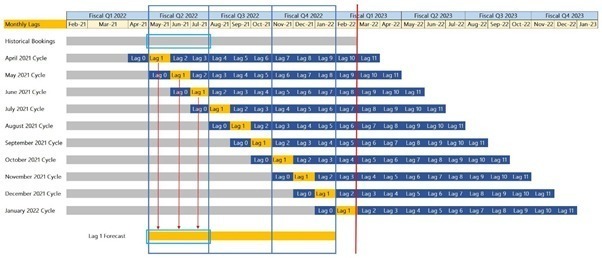
Recommendations
- Drill down into examples of SKU-level extreme error and visualize all relevant datasets in an Analytics view to understand the root causes of the high error.
- Store all model-specific forecasts in dedicated key figures to understand which model works well for which SKU to fine-tune model parameters.
- Work with various values of pre-processing methods and parameters, as the outlier correction had a substantial bearing on forecast error in our data set. Also, work with the Gradient Boosting Global Parameter Disable_Hybrid_GBDT to X to see if it helps.
- Run Forecast Automation Job in IBP and check off the box on ‘Consider Time-Series Properties’ in the IBP Forecast Model definition.

IBP can identify intermittent SKUs with trend/seasonality patterns and report critical parameters such as Average Demand Interval to aid Demand Planners in understanding the Demand Pattern mix across an extensive SKU portfolio.

Leverage SAP IBP with YASH Technologies!
YASH offers a comprehensive range of services, including everything from initial scoping and implementation to support. Demand is one of our various SAP IBP offerings. It includes the following.
- Statistical Forecasting
- Consensus Demand Plan
- Sales History
- Improving forecast accuracy count
- Data Scope is Finished Products (KPIs & Reports)
- Integration of demand plan to SAP / non-SAP execution systems
For more information, visit https://www.yash.com/coe/sap/sap-ibp/.







